In our response to the Threatened Species Strategy Action Plan consultation paper we focus on the first five action areas.
These include the activities essential for the transformational changes needed to recover threatened species and places in the long term – namely, mitigation of the big threats to biodiversity and effective conservation planning.
The prioritisation of species and places is also important, but unless the proposed recovery actions are coupled with widespread application of threat abatement, including through new planning and policy measures, as well as research to strengthen Australia’s abatement capacity, recovery progress will be ‘a drop in the bucket’ compared to what is needed.
Target setting
A high level of ambition is needed for target setting, including for meeting new international targets currently under development as part of the post 2020 Global Biodiversity Framework, and achieving the goals and objectives in Australia’s Strategy for Nature (2019-30). The identification of synergies across the action areas will be important for defining cumulative targets, as will the adaptation of targets over time as new challenges arise.
A dedicated consultative process would be helpful for setting SMART targets for new and established invasive threats. The best scientific information available is needed to ensure they are specific and measurable. To ensure they are also achievable, realistic and time-bound it may be necessary to cross-check the assumptions within the Theory of Change logic and the activities being proposed.
Ongoing engagement
Each of the proposed action areas needs ongoing engagement with stakeholders to fully canvass options, identify priorities, set targets and guide delivery. We recommend expert reference groups be established to bring together key knowledge holders, including from both scientific and First Nations perspectives, to guide the further development and delivery of each action area.
To help promote continued engagement the action plan could become an online ‘living document’ through which stakeholders can see progress towards targets and the cumulative impact of individual actions across tenures.
Recommendations
- Establish expert reference groups to:
a) Inform target setting for both long-term and short-term targets.
b) Evaluate the performance of key actions and recommend iterative improvements over time. - It is critical that the action plan and the Threatened Species Strategy more broadly is adequately funded. The action plan should transparently set out the anticipated costs of relevant actions and identify sources of investment.








